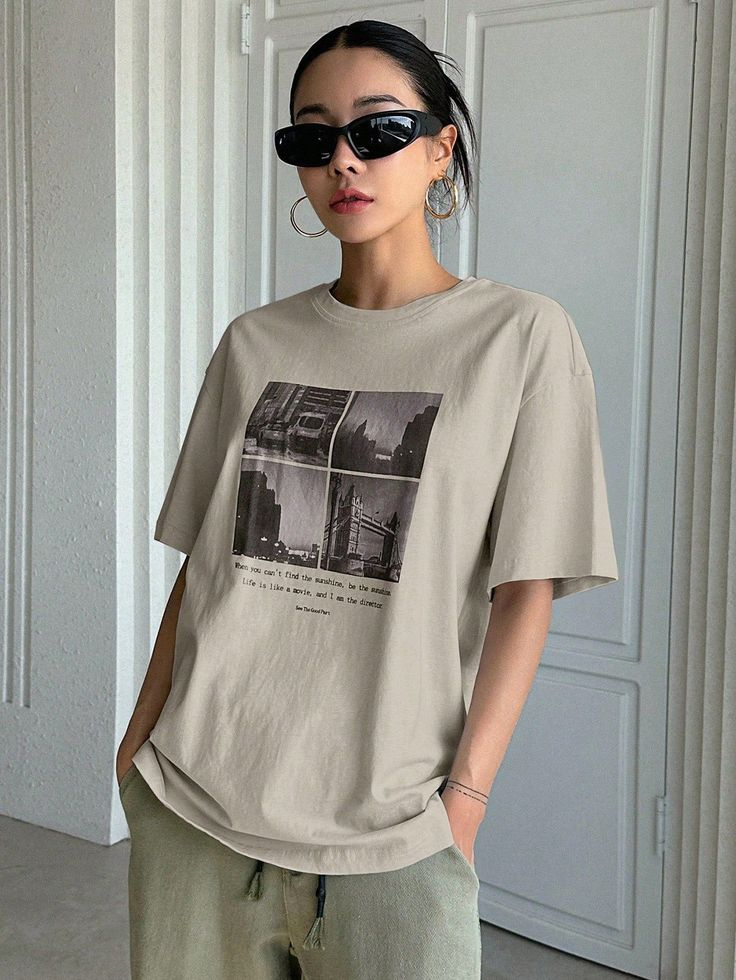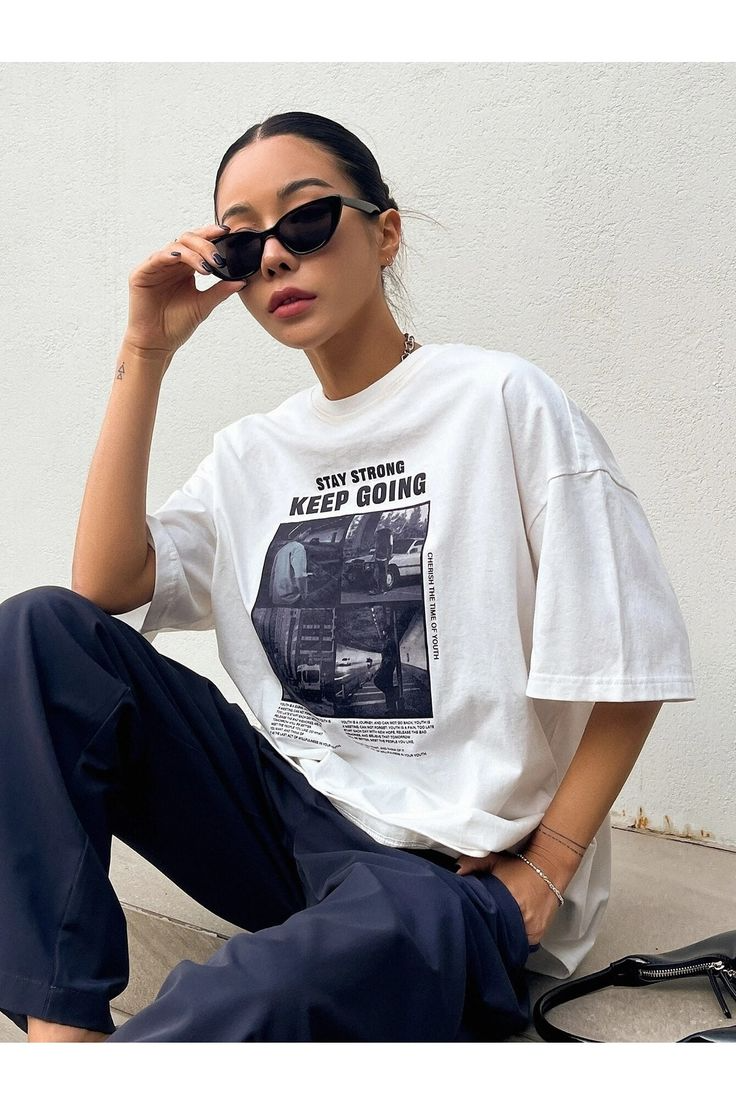
T-shirts: A Comprehensive Exploration of Their Impact on Fashion, Culture, and Society
- No Comments
The T-shirt, a quintessential item of clothing, holds a special place in both fashion and everyday life. Over time, it has transcended its humble beginnings as an undergarment to become a universal symbol of comfort, style, and self-expression. This article aims to explore the history, cultural significance, versatility, environmental impact, and future of T-shirts, examining how this simple garment has come to represent a wide array of ideas, movements, and identities.
The Historical Evolution of the T-shirt
The journey of the T-shirt begins in the late 19th century, when it was initially designed as an undergarment for U.S. Navy sailors. These early T-shirts were made of lightweight cotton, designed to be worn under the uniform to provide comfort and breathability in warm climates. The simple, practical design of the T-shirt—a short-sleeved, round-neck shirt—proved effective for this purpose and laid the foundation for its widespread adoption in the years that followed.
In the early 20th century, the T-shirt began to evolve. The term “T-shirt” itself emerged in the 1920s, as people began to wear the garment as outerwear, particularly for more casual activities. At first, T-shirts were still primarily worn by men and were considered practical, everyday clothing rather than a fashion item. The 1930s and 1940s saw T-shirts become more common as leisurewear, and by the post-World War II period, T-shirts had gained mainstream popularity.
In the 1950s, T-shirts took on a new significance in popular culture. Hollywood stars like Marlon Brando, James Dean, and Elvis Presley were often seen wearing T-shirts in iconic films, contributing to the garment’s association with youth rebellion, masculinity, and coolness. The 1950s also saw the rise of T-shirts featuring printed designs, from sports teams and advertising slogans to political messages and pop culture references. This was a turning point in the garment’s history, as T-shirts became a canvas for self-expression.
By the 1960s and 1970s, T-shirts had become synonymous with counterculture movements. They were frequently worn by protesters, musicians, and activists, with slogans promoting peace, love, and political change. The T-shirt became a powerful tool for conveying messages of social and political significance, cementing its role as a medium for personal expression.
The Cultural and Social Significance of T-shirts
T-shirts have become much more than just clothing; they are now vehicles for cultural expression. The power of the T-shirt lies in its ability to communicate messages, beliefs, and affiliations in a simple yet impactful way. Whether through graphic designs, slogans, or logos, T-shirts serve as a form of self-expression, allowing wearers to convey their identity, interests, and values to the world.
One of the most notable aspects of T-shirts is their role in promoting and representing cultural movements. Throughout history, T-shirts have been used to support various social, political, and environmental causes. During the civil rights movement in the 1960s, activists wore T-shirts emblazoned with messages of equality and justice, helping to spread their message of social change. Similarly, T-shirts became a symbol of protest during the Vietnam War, with many young people using the garment to express their opposition to the war and their support for peace.
In the 1980s and 1990s, T-shirts became even more entrenched in pop culture, particularly in the music and entertainment industries. Rock bands and musicians began using T-shirts as merchandise, with their logos and album artwork featured on shirts worn by fans. This turned the T-shirt into a form of cultural currency, as fans used T-shirts to show their allegiance to a particular artist, genre, or movement.
The role of the T-shirt in political activism has also grown over the years. Today, T-shirts continue to be used as tools for social and political change, with activists and organizations using the garment to promote messages related to gender equality, LGBTQ+ rights, climate change, racial justice, and more. In this way, the T-shirt remains a powerful medium for individuals to voice their opinions and show solidarity with causes that are important to them.
The Versatility of the T-shirt: A Wardrobe Staple
What makes the T-shirt so universally loved is its incredible versatility. It is one of the most adaptable pieces of clothing, suited to a wide range of occasions, from casual everyday wear to more formal or semi-formal events. The classic T-shirt, which comes in a variety of styles, colors, and fabrics, can be dressed up or down depending on the situation, making it an essential part of any wardrobe.
T-shirts come in countless variations, from plain, solid-colored options to those adorned with intricate designs, logos, or artwork. The range of fabrics used to make T-shirts—from traditional cotton to organic materials, synthetics, and blends—also contributes to their adaptability. For instance, lightweight cotton T-shirts are perfect for hot weather, while thicker, more durable fabrics are better suited to cooler temperatures. T-shirts are available in a variety of fits, including slim, regular, and oversized, making them suitable for different body types and personal preferences.
T-shirts can be paired with almost anything, making them a versatile addition to any outfit. A simple white T-shirt works well with jeans, skirts, or shorts, creating a timeless, effortless look. For a more formal appearance, a T-shirt can be tucked into a blazer or worn underneath a cardigan or jacket. In recent years, the trend of pairing T-shirts with suits or formal wear has become increasingly popular, creating a unique blend of casual and sophisticated styles.
Moreover, T-shirts are often seen as a symbol of comfort and relaxation. They are commonly associated with leisurely activities like lounging at home, hanging out with friends, or enjoying a casual day out. T-shirts’ lightweight and breathable nature make them ideal for warmer weather, while their ability to be layered with other clothing items such as hoodies, cardigans, or jackets makes them appropriate for colder climates.
The Environmental Impact of T-shirt Production
While T-shirts are beloved for their versatility, style, and comfort, their production has significant environmental consequences. The garment industry, particularly fast fashion, has been criticized for its environmental impact, with T-shirts often contributing to issues like textile waste, water pollution, and excessive use of resources.
One of the main concerns associated with T-shirt production is the use of cotton, which requires large amounts of water and pesticides to grow. Cotton farming is known to be water-intensive, with it taking thousands of liters of water to produce just one kilogram of cotton. Additionally, conventional cotton farming relies heavily on chemical pesticides and fertilizers, which can harm local ecosystems and contribute to environmental degradation. The use of synthetic fibers in T-shirt production, such as polyester and nylon, is also problematic due to their reliance on fossil fuels and the fact that these materials are not biodegradable.
Another environmental issue related to T-shirt production is the chemical dyes used to color the fabric. Conventional dyeing processes often involve harmful chemicals that can contaminate water supplies and damage aquatic ecosystems. Moreover, the fast fashion industry encourages the rapid turnover of T-shirts, leading to millions of garments being discarded each year. The disposal of these T-shirts contributes to the growing problem of textile waste, with many garments ending up in landfills, where they take decades to decompose.
As awareness of these environmental issues grows, there has been a shift toward more sustainable and ethical practices in the T-shirt industry. Brands are now offering eco-friendly options made from organic cotton, bamboo, or recycled materials. These sustainable T-shirts are produced using less water, fewer pesticides, and environmentally friendly dyes. Furthermore, many ethical fashion brands are prioritizing fair labor practices and transparency in their supply chains, ensuring that workers are paid fairly and treated ethically.
Consumers are also becoming more conscious of their clothing choices and are increasingly seeking out sustainable T-shirt brands. By opting for higher-quality garments, people can reduce their consumption of fast fashion and minimize their environmental footprint. Additionally, consumers are encouraged to recycle old T-shirts, repurpose them, or donate them to charity, helping to extend the life of these garments and reduce waste.
The Future of T-shirts: Innovation and Sustainability
As the fashion industry continues to evolve, the future of T-shirts looks promising. Innovation in textile technology is enabling the creation of more sustainable fabrics and production processes. One such innovation is the development of fabrics made from recycled plastic bottles, which helps reduce the environmental impact of plastic waste. Another exciting advancement is the use of biodegradable materials in T-shirt production, which could drastically reduce textile waste in the long term.
The T-shirt’s role in popular culture is also likely to continue evolving. As people become more connected through social media and digital platforms, the T-shirt will remain a powerful tool for self-expression and cultural communication. We may see more collaboration between designers, artists, and social movements, resulting in T-shirts that reflect the values and identities of contemporary society.
Moreover, the trend of sustainable fashion will likely continue to grow, with T-shirts becoming more eco-friendly and ethically produced. As consumers demand more transparency and responsibility from brands, companies that prioritize sustainability will likely gain favor in the marketplace.
Conclusion: The Enduring Appeal of the T-shirt
The T-shirt is more than just a piece of clothing; it is a symbol of comfort, personal expression, and cultural significance. From its humble beginnings as an undergarment to its status as a global fashion staple, the T-shirt has endured and evolved, reflecting the changing values and trends of society.
Today, the T-shirt continues to be a versatile, affordable, and widely accessible garment, allowing people to showcase their individuality, beliefs, and affiliations. While the environmental challenges associated with T-shirt production are significant, there is hope for a more sustainable future, with innovations in materials, production methods, and consumer behavior leading the way.
As the T-shirt continues to shape fashion, culture, and activism, it is clear that this simple, everyday garment will remain a central part of our wardrobes for years to come, providing a canvas for self-expression, creativity, and social change.
Previous Post



The Ubiquity and Versatility of T-Shirts

The Evolution and Cultural Impact of the T-Shirt

T-Shirt: Effortless Style Starts Here

